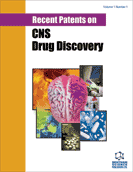Abstract
Current epilepsy therapy is still symptomatic using anti-seizure, rather than anti-epileptic, medications. This therapy may control the seizure activity but does not prevent or even cure epilepsy. Treatment strategies that could interfere with the process leading to epilepsy (epileptogenesis) would have significant benefits over the current approaches. Neuronal damage contributing to remodeling of the neuronal networks (such as in the hippocampus during temporal lobe epilepsy) is one of the significant components of ongoing epileptogenesis. Thus, treatment strategies alleviating seizureinduced neuronal damage and network reorganization may become powerful tools fighting the deteriorating process of epileptogenesis. Current anti-seizure medications, especially valproic acid, have some neuroprotective potential. Similarly, there is some hope of neuroprotection with newer anti-seizure drugs such as retigabine and levetiracetam. However, the neuroprotective potential of anti-seizure medications is frequently weak or masked by negative side effects associated with long-term treatment, therefore exceeding the benefits.. Thus, the attention is shifted to different compounds with already established neuroprotective potential. Among steroid hormones under investigation, two groups appear interesting: β-estradiol and selective estrogen receptor modulators – SERM. In low doses, β-estradiol has neuroprotective potency in neurodegenerative diseases. However, its use for seizure-induced neuroprotection is confounded by a common perception of proconvulsant features of estrogens. Here we review that both features, effects on neuronal excitability and neuroprotection, apply under specific conditions and may be separated by individualized therapy taking into account the dosage paradigm, timing, sex and age of the subjects and their gonadal hormone status (including progesterone: opposed vs. unopposed estrogen). Several studies have demonstrated that β-estradiol has indeed potency to protect neurons from seizureinduced damage. Additional studies are required to determine exact mechanisms of β-estradiol and SERMs in seizureinduced neuroprotection for truly individualized and effective therapy. The article presents some promising patents on anti-seizure medications.
Keywords: Anti-seizure medications, estrogen, genomic effects, non-genomic effects, neuronal damage, status epilepticus.
 69
69

